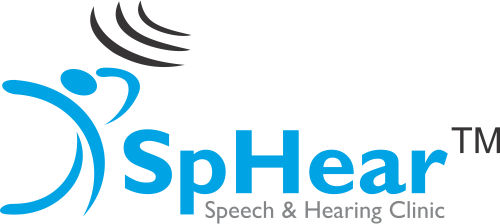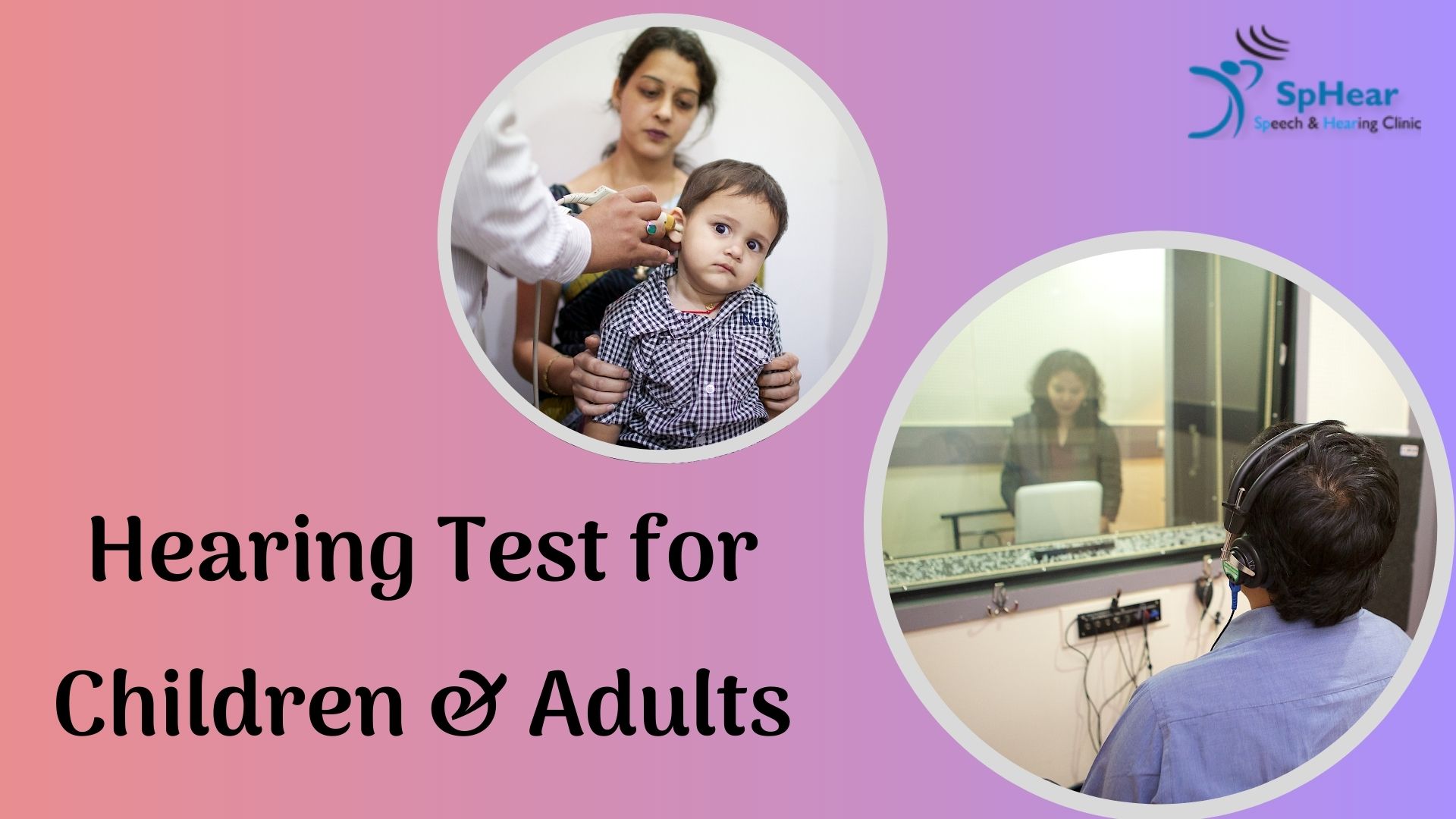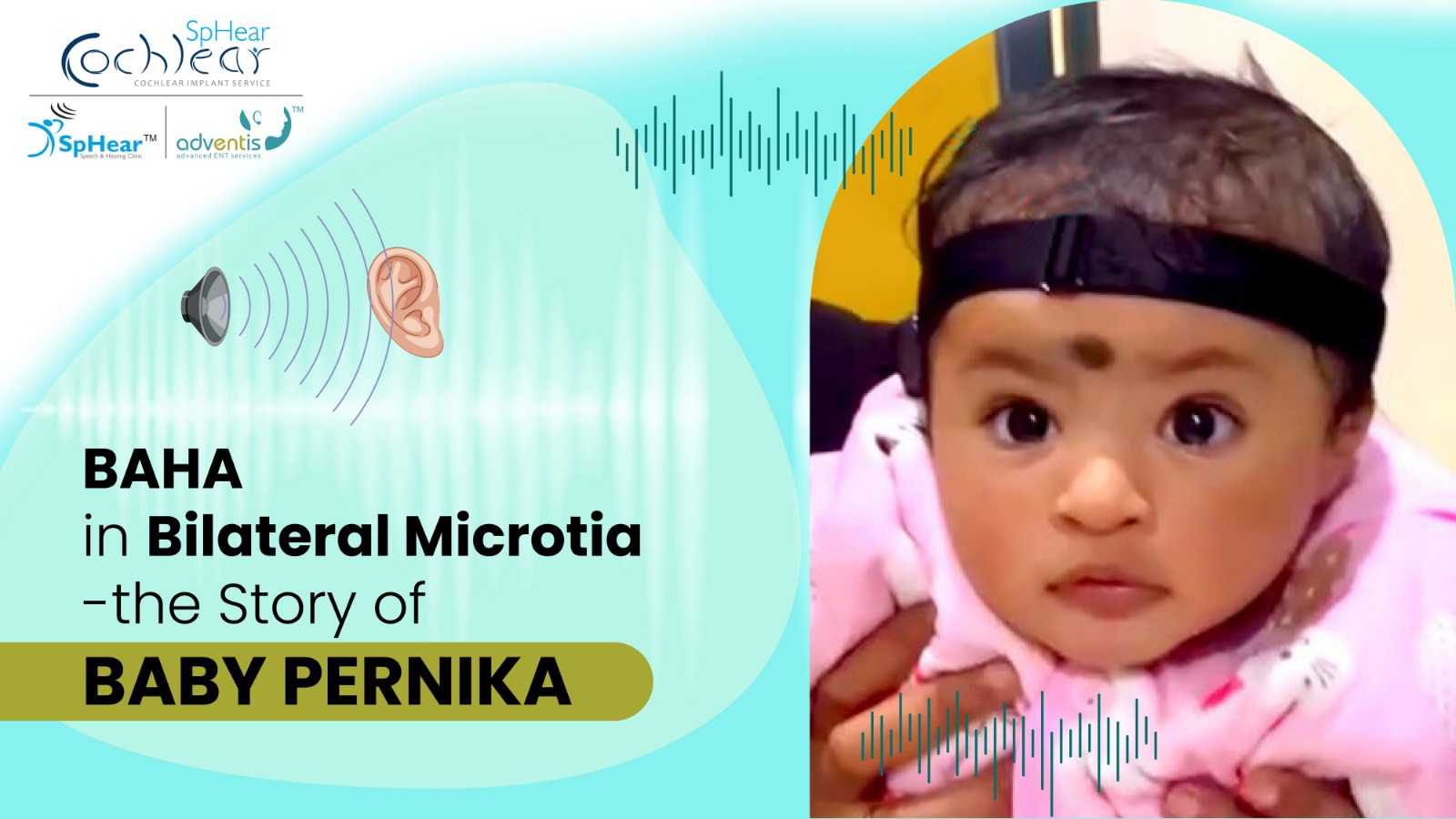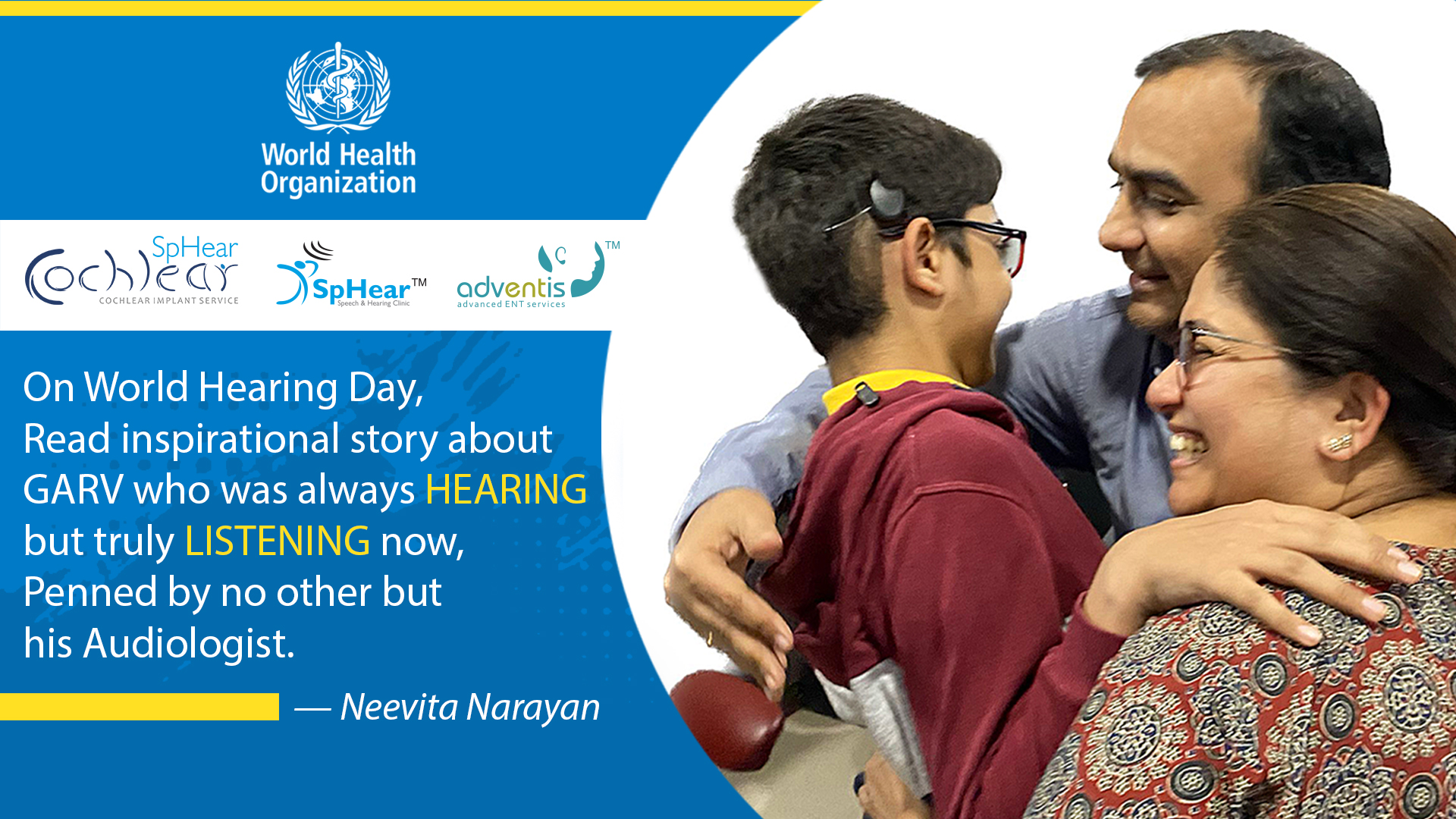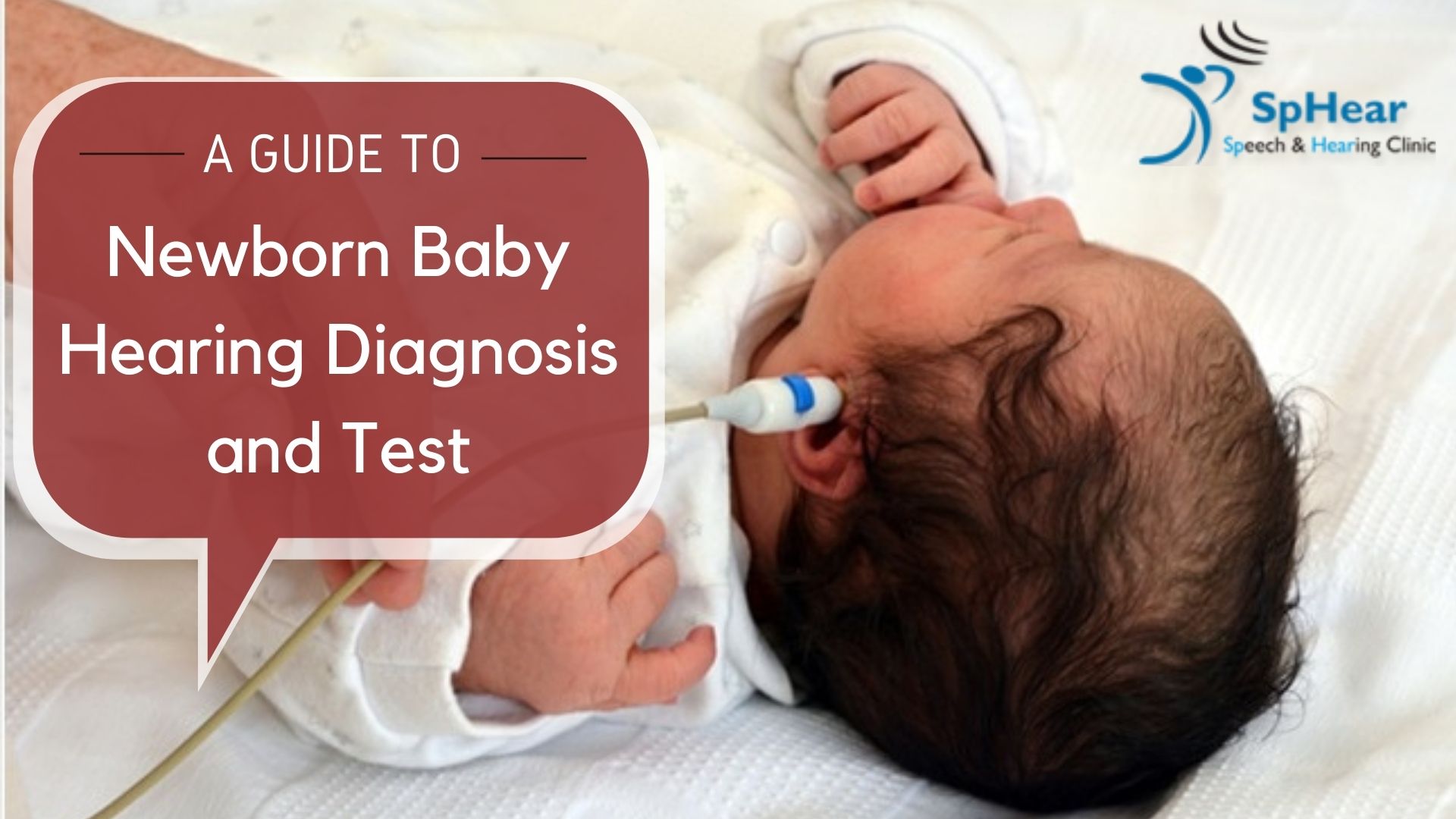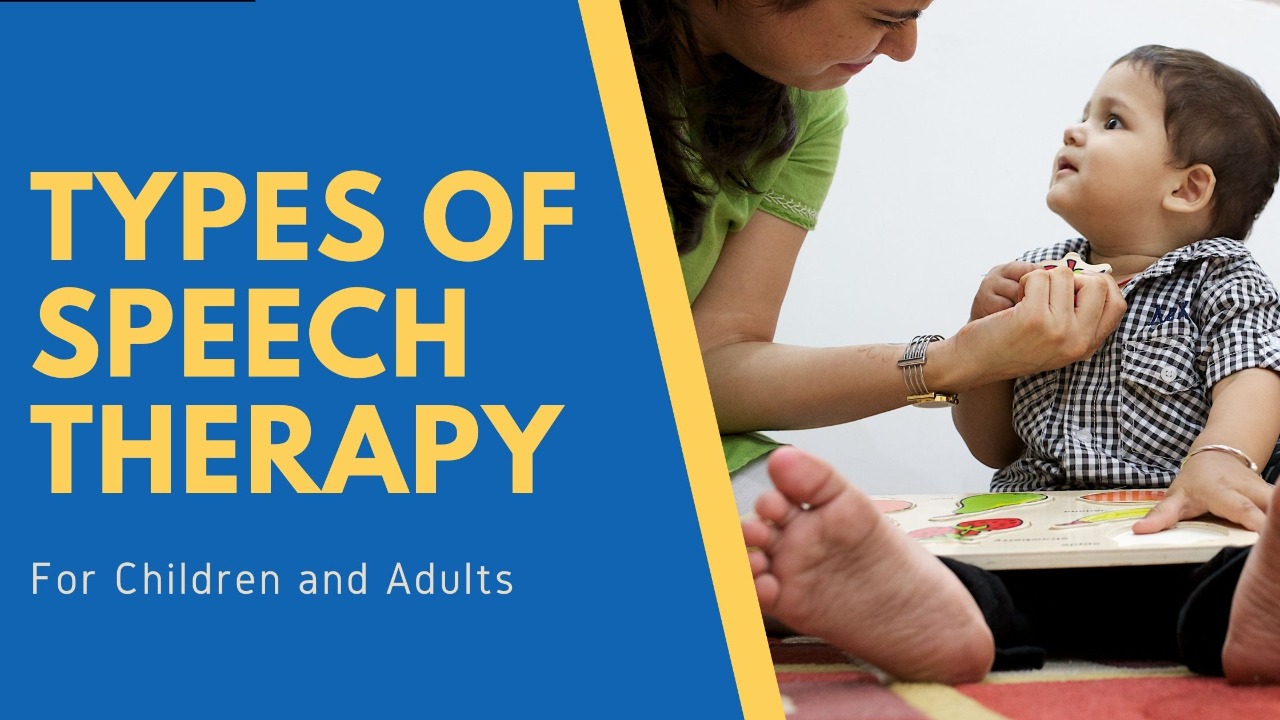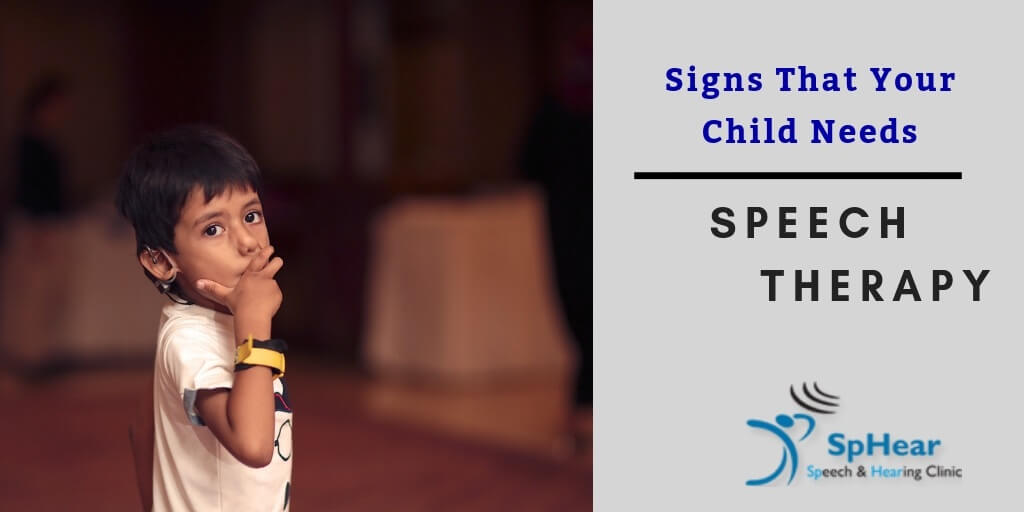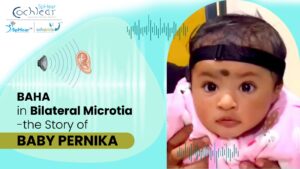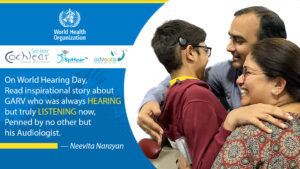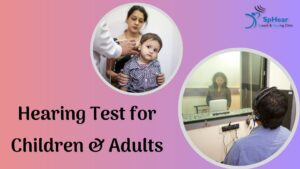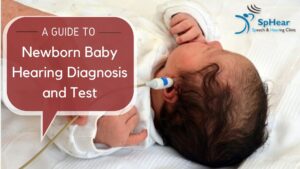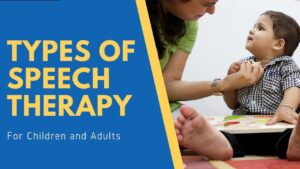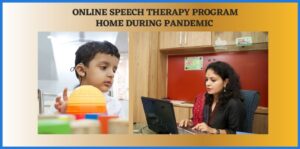Getting a hearing test for kids and adults is an easy and painless process. This process will get you started on the path to better hearing. Find out more about what to expect at the hearing test and its importance.
Hearing loss has significant effects on speech, language, communication & social skills and can also impact on word level. Getting your hearing tested is the first step towards better hearing & communication. Many people fail to suspect hearing loss at an early stage. Many stay in denial & try to ignore the hearing loss.
So how do we understand and recognize if someone is affected by hearing loss?
In this post, explore; how to understand the first signs of hearing loss and different types of hearing tests.
Hearing loss is a very common problem and is a hidden problem. People are unable to recognize the symptoms of hearing loss until it progresses into a severe condition. Thus, getting a baseline annual follow-up test and hearing assessments can help to catch it early.
Symptoms of Hearing Loss
- Turning on the radio or TV at a higher volume
- Asking for repetition frequently
- Difficulty in understanding speech in a noisy environment
- Difficulty in hearing the telephonic conversation
- A feeling that you can hear but not understand
- unable to participate in a group conversation
- Unable to understand from where the sound is coming –Localization
- You find yourself avoiding social gathering
- Feeling tired or exhausted after social gathering
- You feel ringing in-ear or tinnitus
- Some sounds seem too loud
Why is the Hearing Test Important?
A hearing test or hearing evaluation is important to determine or check any form of hearing conditions or ear problems one is suffering or is developing. A thorough hearing test can also help to define the type of hearing you have:
- Conductive Hearing Loss
- Sensorineural Hearing Loss( overall)
- Mixed Hearing Loss
- High-Frequency Hearing loss
- Mid-range hearing loss –cookie bite
- Low -frequency hearing loss–reverse slope hearing loss
- Flat Hearing loss
- Sudden hearing loss
- Temporary hearing loss
- Auditory Neuropathy Spectrum Disorder (ANSD)
- Unilateral Hearing Loss –Single-sided Hearing loss
A proper assessment of hearing loss types allows an audiologist to examine the condition and offer appropriate solutions like hearing aids, cochlear implants, or bone-anchored hearing aid systems to hear sounds.
What to expect about the Hearing Test?
Hearing tests are painless and mostly non-invasive. Complete hearing assessment can never be concluded based on a standalone or single test. To come to a conclusion about hearing loss mostly a test battery is required to be done that may constitute 3-5 tests. Hearing Tests for babies & children are absolutely different from hearing tests for adults. The protocols & process & also test types for babies & adults are completely different. Hearing tests in infants & babies can take few days to come to a conclusion, whereas in adults it can take an hour of two for a complete testings.
During your appointment for a hearing test, we request the patient to fill a COVID-19 approval form along with other paperwork asking general health questions.
There are many potential causes of hearing loss. The case history will help the audiologist understand hearing loss better and its potential cause.
Medical conditions like sinus, earwax, ear infection, and allergies can contribute to hearing loss. Also, any injury or trauma in the head or ear structure recently temporary or permanent hearing damage. Other forms of causes include:
- Exposure to loud noise( Noise-induced)
- Aging (presbycusis)
- Head trauma
- Virus or disease
- Autoimmune inner ear disease
- Heredity
- Malformation of the inner ear
- Medical condition or illness (Meniere’s disease, Otosclerosis, middle ear infections)
Our audiologist will also discuss the symptoms you are experiencing and how they affect in your daily life. It helps them to interpret your lifestyle and analyse the types of work, hobbies, or social situations important to you. Keep in mind that hearing loss is exhausting, leading to fatigue, vomiting, memory loss, and headache.
After this, an audiologist will perform a hearing assessment to evaluate the condition and cause. The audiologist will then test your hearing, performing an audiogram in combination with another test. The test takes up to 30 minutes to few hours depending on severity, complexity and age of the person. They perform the test in a room equipped with proper audiometer & speakers called audio-booth. It is sound-treated room and has two room set-up. One outer room is where audiologist is seated and an inner room where the person to be tested is seated. The audio booth is used for testing hearing loss in infants, toddlers, and adults or for those who already have hearing problems.
The sound is measured during the test in two ways:
- volume or intensity level–measured in decibels (dB)
- pitch or frequency (whether it’s high or low)–measured in Hertz (Hz)
Your audiologist will probably refer to these two things when they explain the results of your test to you. And share the report on the same day mostly
What do the hearing test result mean?
A hearing test result shows whether you have a hearing loss in one or both ears.
It shows what are your hearing thresholds in decibels at different frequencies for both ears. The frequencies measured are 125 Hz–8000Hz. Besides, it also helps to measure how much your hearing is lost or damaged. The sound intensity is measured in decibels. When a person whispers in your ear, that’s 30 decibels, while 50-60 decibel is referred to as normal speech and shouting in-ears or any loud sound starts at 80 decibels. An adult or children with hearing thresholds up to 25 decibels across all frequencies is considered to have normal hearing.
Here is an overview of the breakdown on hearing loss:
- Mild hearing loss: 26 to 40 decibels
- Moderate hearing loss: 41 to 55 decibels
- Moderate-to-severe hearing loss: 56 to 70 decibels
- Severe hearing loss: 71 to 90 decibels
- Profound hearing loss: 91 to 100 decibels
Different Types of Hearing Test
Some common hearing tests that we perform at SpHear Speech and Hearing Clinic are:
1)Pure Tone Audiometry Test
This is the most common type of hearing test– pure-tone audiometry. This test helps in finding the quietest sound you can hear at different frequencies. The test comprises listening to tones at different pitches and volumes. It is a painless procedure. A series of sounds is played via headphones and will be asked to respond to the sounds by raising your finger or by pressing a button. We perform the test in one ear and then the other as the results can be different. Depending on your results, the audiologist will or may not recommend another test.
When the child is very young,, he may not wear the headphones then we test the same thing via speakers placed in the audio-booth.
Young children are made to play games to get their hearing thresholds and depending on the age of the child and cognitive ability, the same test can be performed by doing
- VRA(Visual Reinforcement Audiometry): this test is for children between age 6 months-2 years. In this, the sound is simultaneously presented with a visual distraction to the child and the child is conditioned to this activity. After the child is conditioned, only sound is presented & the hearing threshold at different frequencies are measured. It can take few days to complete this test for both ears.
- Conditioned Play Audiometry: This is for children 2-6 years. In this test the child is made to do an activity-like keeping a block or toy at every presentation of sound. Child can wear headphones or can do without it as well if he’s younger.
- BONE Conduction Testing: In this test, the audiologist place a vibrator behind the ear & present the sound. The sound will vibrate your skull and the skull bone will transfer the sound to the inner ear. This test enables us to understand the middle ear blockage & also inner ear hearing levels.
2)Speech Audiometry Test
Speech audiometry is another form of a hearing test that allows determining the degree and type of hearing loss. The test offers insight on word recognition and about discomfort or tolerance to speech stimuli. The outcome of the test helps to evaluate hearing sensitivity and speech perception ability and for site-of-lesion testing. It is measured in SRT ( Speech Reception Thresholds) and SDS ( Speech Discrimination Scores). You are mostly asked to repeat the words or sentences presented by audiologist. Your performance would be measured and recorded by audiologists to get your scores.
3)MIDDLE EAR TESTINGS
Our ear is made of three parts-outer ears, middle ear & inner ear. Any issues in the middle ear obstruct the sound to be transferred from the outer ear to the inner ear -where actual hearing happens & the patient can have a perception of hearing loss. Most of the middle ear problems can be treated medically or surgical. But it’s important to diagnose correctly which is done by audiologist.
These tests help us know how well our middle ear functions. These tests are :
- TYMPANOMETRY – This test tells how good our eardrums are moving. The audiologist places an ear probe in your ear canal and ask you not to swallow or cough. This test is painless and can take place in 5-10 min for each ear. The result is interpreted by a graph that says whether the ear drum is normal with good movements or its stiff or it has a scar or it has a hole in it. It can also indicate if there’s fluid behind the eardrum.
- ACOUSTIC REFLEX MEASURE – This testing process is the same as tympanometry. This test measures the reflex in middle ear muscles that happens when a loud sound is presented. It says a lot about hearing status.
4) AUDITORY BRAINSTEM RESPONSE( ABR Testing)
Auditory Brainstem Response testing tells us how the inner ear(Cochlear) and auditory brain pathway is functioning to respond to sound levels.
This test is mostly done in babies and younger children whose subjective tests cannot be fully relied on. This test provides information about auditory nerve conduction & its function.
ABR can also be used as a hearing screening tool in infants.
In this test, audiologists places surface electrodes on the forehead, and behind ears. An ear probe is placed in both ears and the test is conducted while the child is sedated. Anybody movement can make the results faulty. It is absolutely safe & painless test
5) AUDITORY STEADY STATE RESPONSE( ASSR)
This test is done in exactly the same way as ABR testing. In this test, more information is extracted by audiologist which says auditory nerve responses to sound level at more specific frequencies.
6) OTOACOUSTIC EMISSIONS (OAE)
This test tells us how well your inner ear works. It measures the OAE which are responses sent by the inner ear in response to sounds. These emissions are picked up by audiologists and they interpret the functions of inner ear cells called hair cells. They vibrate when sounds are presented. Even if there’s minimal hearing loss or blockage, these emissions are not picked up. This test is mostly used in newborn hearing screening and also used along with other hearing tests to diagnose the type of hearing loss. This test is painless and can be done quickly if the child is not moving much.
Next step after the hearing test
Once your test is complete, if you have a diagnosis of a hearing problem, the audiologist will recommend the treatment. For most people with mild-to-moderate hearing loss, and if there’s no middle ear infection or problems, the audiologist would suggest wearing hearing aids or amplification devices of various types and styles to amplify sounds going into the inner ear. Sometimes, where the patient has profound hearing loss, your audiologist may recommend a cochlear implant in case you cannot benefit from hearing aids.
